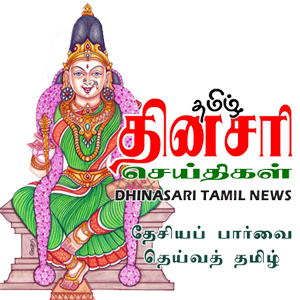
“Article 35A of the Indian Constitution was introduced in 1954 by the then President of India, Dr. Rajendra Prasad, through the Constitution Order, 1954.“
By Narasimhan Vijayaraghavan

Art.35A has a place in the Art.370 scheme of things. In fact, it is the former they is the real problematic issue. Interestingly, Art.35A has not even been alluded to yet. It is taken as umbilically linked to Art.370 and once Art.370 was ‘de operationslised’ the expression Zafar Shah, the advocate used, Art.35A went, lock,stock abc barrel. Time to go there.
Article 35A of the Indian Constitution was introduced in 1954 by the then President of India, Dr. Rajendra Prasad, through the Constitution Order, 1954. The order was issued under Article 370, which grants special status to the state of Jammu and Kashmir.
Article 35A was added to the Constitution in 1954. It gave the state government the power to define who is a “permanent resident” of Jammu and Kashmir. Permanent residents were given special privileges, such as the right to own property in the state and to get government jobs.The combination of Article 370 and Article 35A gave Jammu and Kashmir a very different status from the rest of India.
Article 35A gives the Jammu and Kashmir legislature the power to define who is a “permanent resident” of the state. This definition has been used to restrict the rights of non-permanent residents in a number of ways, including:
A. Preventing them from buying property in the state
B. Denying them government jobs
C. Barring them from voting in local elections
The introduction of Article 35A was controversial from the start. Critics argued that it violated the fundamental rights guaranteed by the Indian Constitution, such as the right to equality and the right to property. They also argued that it discriminated against women, as it allowed a woman who married a non-permanent resident to lose her permanent residency status, but not vice versa.
ALSO READ: Daily Nuggets on Art.370 legacy-9
The repeal of Article 35A has been welcomed by most who argue that it will help to integrate the state more fully into the Indian Union. However, others have criticized the decision, arguing that it will undermine the special status of Jammu and Kashmir and lead to further instability in the region.
The mode and manner in which Article 35A was introduced in the Indian Constitution is a complex and controversial issue. There are strong arguments on both sides of the debate. Ultimately, the decision of whether or not to repeal the article was a political one, and it is likely to continue to be debated for many years to come, even after the verdict from the top court, for sure.
A retired judge from a constitutional court offered these tips as worthy nuggets to recall. Can we forget or ignore the Sanathan Dharma heritage? Does it not matter? Or did it not? What of them today? Kashmir has a long and rich history of Sanatan Dharma, dating back to the ancient Vedic period. The region was once home to many important Hindu pilgrimage sites, including the Amarnath cave, and was a major center of learning for Hindu scholars.
ALSO READ: Daily Nuggets from the Art.370 legacy-7
Some of the most famous gurus who were actors in the ancient history of Sanatan Dharma legacy in Kashmir include:
A. Lakshmana Joo: He was a Kashmiri Pandit scholar and saint who lived in the 16th century. He was a master of Advaita Vedanta, and his teachings had a profound influence on the development of Hindu thought.
B. Acharya Abhinavagupta: He was a Kashmiri Shaivite philosopher and tantric who lived in the 10th century. He is considered one of the most important figures in the history of Kashmir Shaivism
C. Somananda: He was a Kashmiri Shaivite philosopher who lived in the 9th century. He is the author of the important text Shiva Sutras, which is a foundational text of Kashmir Shaivism.
D. Vasugupta: He was a Kashmiri Shaivite philosopher who lived in the 8th century. He is the author of the important text Pratyabhijnahrdayam, which is a foundational text of Kashmir Shaivism.
E. Amarnath cave: This cave is a major pilgrimage site for Hindus, and is believed to be the site where Shiva revealed the secret of the universe to his consort Parvati.
F. Shri Shankaracharya Math: This monastery is the seat of the Shankaracharyas, who are the spiritual leaders of the Advaita philosophy.
G. Nandipura: This temple is dedicated to Nandi, the bull-headed mount of Shiva. It is said to be the place where Shiva performed his tandava dance, an act of cosmic creation and destruction.
H. Keshgarh Matt: This monastery is the seat of the Kashmiri Shaivism tradition. It is said to be the place where Somananda and Vasugupta received their initiation into Kashmir Shaivism.
One can on and on. And for one who had authored Swami Vivekananda ( Musings,Anecfotes,Episodes), Kalaimagal Publications, to be published shortly, Swamiji’s travel to Kashmir and Amarnath Cave way back in 1890s is suggested reading ( sorry for a bit of undignified self promo please).
Well, the Supreme Court has already told us, nothing matters except ‘constitutionality’ of the Presidential Orders and changes made!
(Author of Constitution & its Making/Working, OakBridge, is practicing advocate in the Madras High Court)





